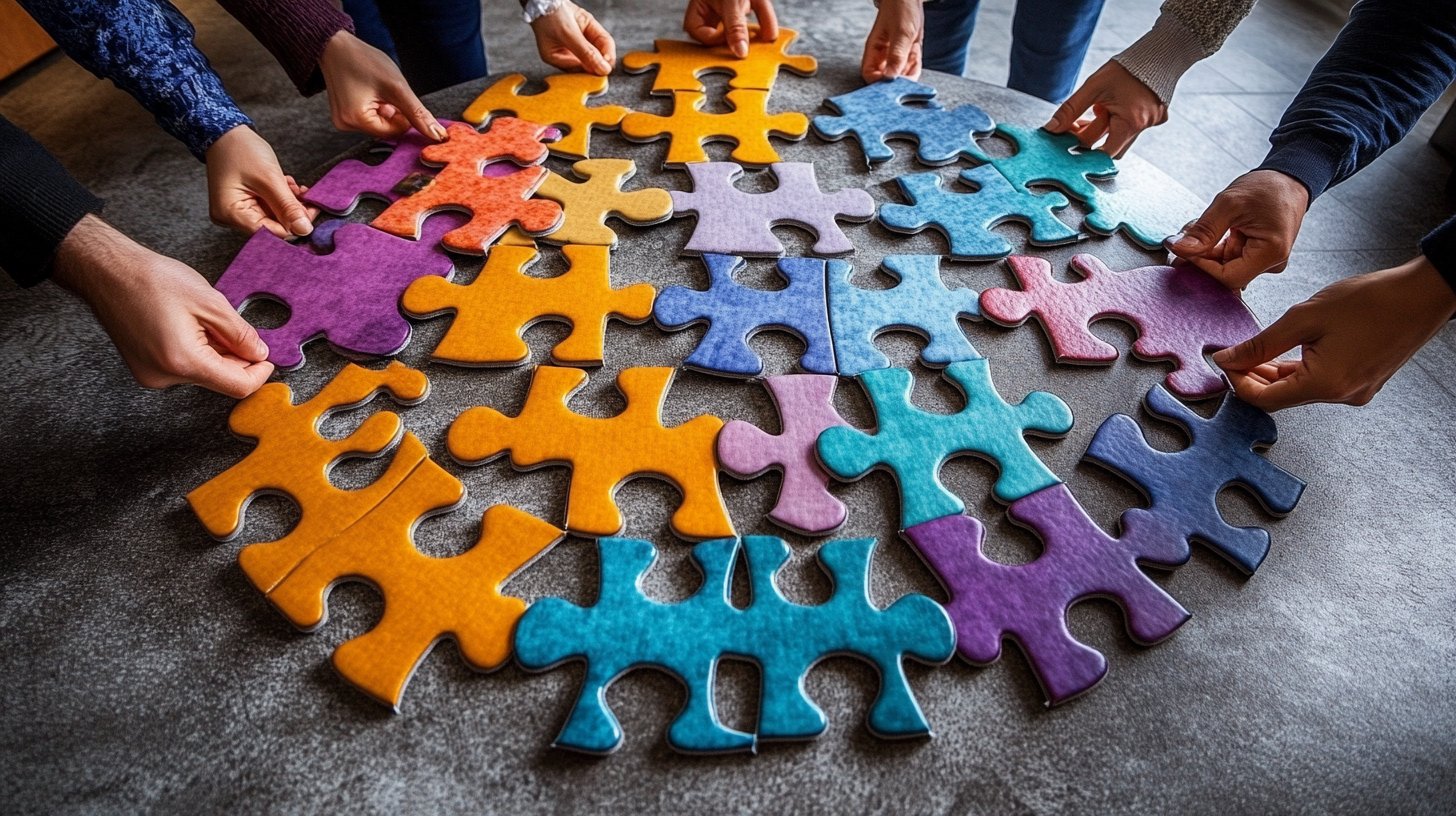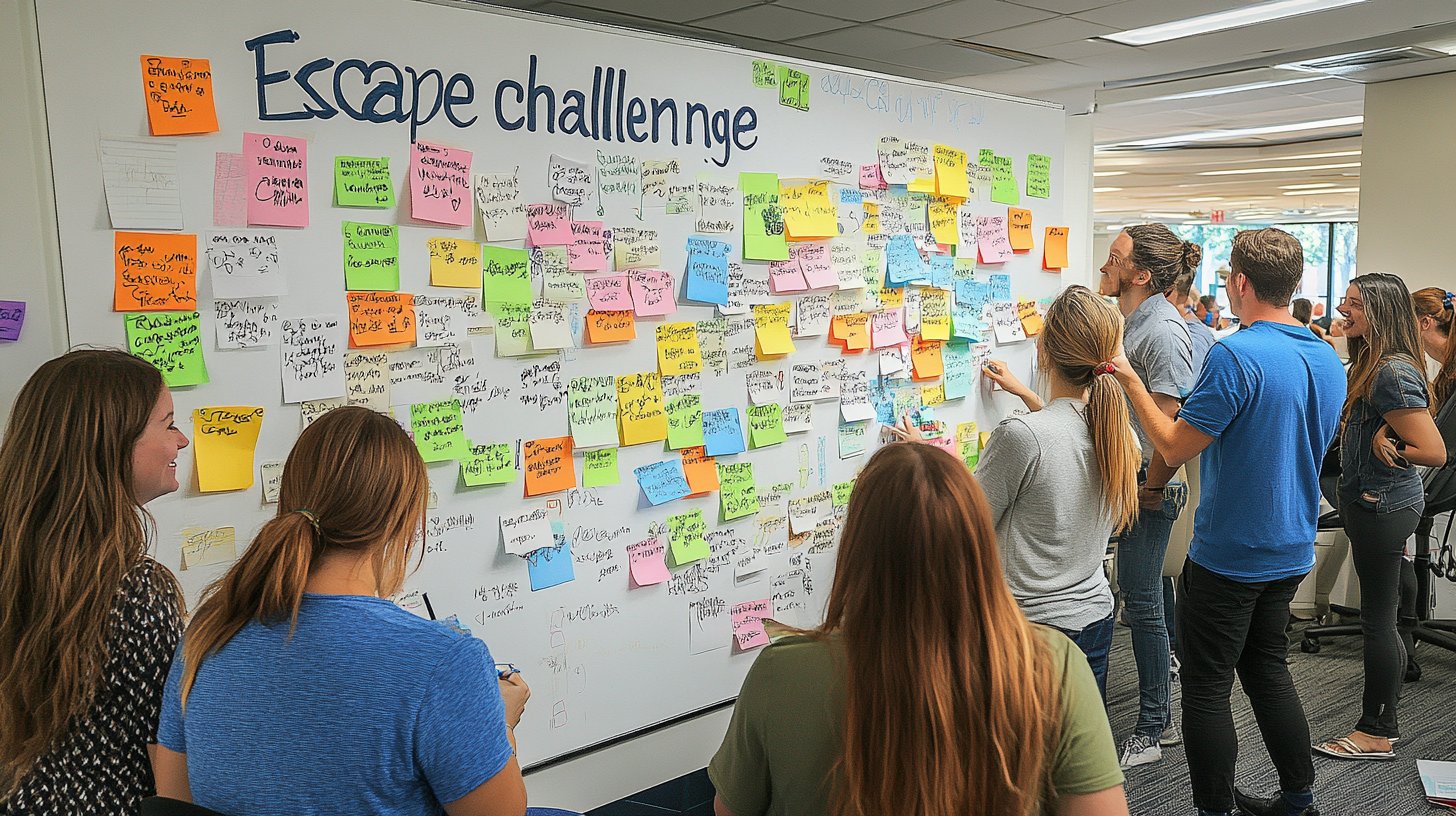Are you looking to motivate your team while creating stronger connections among its members? Team-building activities meet these expectations by offering a balance between entertainment and tangible professional goals. In your daily work, you face challenges such as improving communication, stimulating collaboration, or resolving tensions. These issues can sometimes hinder productivity and create a less dynamic environment.
To address these needs, it’s essential to offer engaging and tailored activities for your team. These exercises foster an environment where every talent can shine, thereby enhancing collective effectiveness. Among the available options, activities like treasure hunts provide a playful and stimulating approach. These initiatives go beyond mere entertainment: they enhance key skills while strengthening human connections.
By adopting a thoughtful approach, you can transform your team’s daily interactions into a powerful driver of shared success.
Treasure Hunt: A Fun Activity to Strengthen Team Spirit
A treasure hunt is an excellent team-building exercise. Designed to encourage cooperation and interaction, this activity usually takes place outdoors or in a spacious area. It involves a variety of tasks, from solving riddles to finding hidden objects, all requiring participants to collaborate with their teammates.
This activity stands out for its versatility and adaptability. Whether in a forest, city center, or even within the workplace, the treasure hunt can be customized to meet the specific needs of the team. In addition to strengthening team cohesion, it highlights individual talents and improves team spirit.
Objectives and Benefits of a Treasure Hunt
The primary objectives of a treasure hunt include:
- Encouraging communication among team members.
- Developing problem-solving skills.
- Building mutual trust.
- Improving coordination and strategic planning.
Participating in a treasure hunt offers several benefits. It provides a welcome break from daily work, reducing stress and boosting well-being. This activity engages participants physically and mentally, stimulating their creativity and analytical thinking.
How to Organize a Successful Treasure Hunt
Planning and Preparation
The first step is to clearly define the objectives of the treasure hunt. Do you aim to improve communication, strengthen team cohesion, or simply provide a relaxing experience? Choose an appropriate location and address logistical details such as obtaining necessary permissions and preparing required materials.
Design varied and interesting challenges. Riddles may include brain teasers, hidden clues, and visual puzzles. A good balance ensures that all team members, regardless of their interests and skills, feel involved.
Execution and Follow-Up
On the event day, start with a brief introduction to explain the rules and expectations. Divide participants into balanced teams to maximize interpersonal interactions. Throughout the activity, provide adequate support and maintain a positive, energetic atmosphere.
Once the treasure hunt is over, organize a debriefing session to discuss experiences and lessons learned. This collective reflection helps solidify takeaways and establish action plans to further strengthen team spirit.
Practical Tips for a Memorable Treasure Hunt
- Diversity of Challenges: Include a variety of tasks to engage different thinking styles and skill sets.
- Captivating Theme: Choose a unique theme that sparks participants’ interest, such as a pirate adventure or space exploration.
- Continuous Feedback: Regularly check in with teams to maintain engagement and adjust difficulty levels if needed.
Other Popular Team-Building Activities
Beyond the treasure hunt, various other activities can help strengthen team cohesion. Escape rooms, for example, are particularly popular for their immersive and interactive nature. These games place participants in fictional scenarios where they must work together to solve puzzles and escape a room within a set time.
Here are some additional activity examples:
- Wellness Activities: Group yoga, guided meditation, or mindfulness sessions to promote relaxation and focus.
- Brain Games: Team quizzes, collaborative puzzles, or knowledge contests to stimulate collective intellect.
- Communication Workshops: Sessions focused on active listening, conflict management, and public speaking.
- Charity Projects: Volunteer activities where teams work together for a social cause, fostering bonds through altruistic actions.
Integrating Team-Building Activities into Corporate Culture
To maximize the impact of team-building activities, integrate them regularly into your corporate culture. Rather than treating them as one-off events, make them a consistent part of the annual schedule. Quarterly or biannual sessions can maintain a steady level of cohesion and engagement.
Regular feedback from employees also helps refine and adapt activities to the team’s evolving needs. This demonstrates that the company genuinely values both personal and collective development, creating an environment conducive to effective collaboration.
Succeeding Through Team Building
Team-building activities, such as the treasure hunt, offer numerous tangible and intangible benefits. They not only improve productivity but also enrich the quality of human relationships, laying the foundation for a supportive and dynamic corporate culture.
Careful planning of these activities, combined with enthusiastic participation, creates an upward spiral of motivation and synergy. This benefits both individuals and the organization in the long run. Investing in team-building exercises is a smart strategy for any company aiming to cultivate a fulfilling and high-performing work environment.








